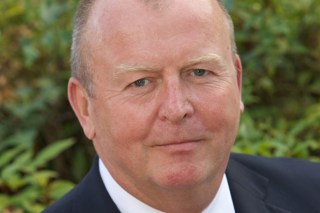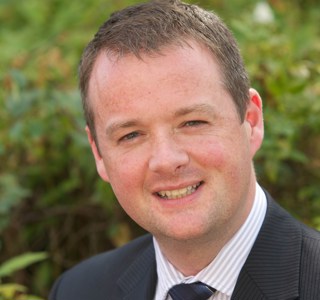Such a view, of course, tends to ignore all the innovation and professionalism that clearly exists within the body repair industry – an industry that's fighting to improve standards in a climate of slumping profits and falling confidence.
Nevertheless, there's a perception that disputes between trade associations have, over the years, damaged the sector irreparably. Many agree that the bodyshop industry needs to unite behind a single representative body if it is to have any hope of standing up for itself against the all-powerful insurers, and improve profits and working conditions.
Yet the industry remains divided into factions – behind the traditionalists of the Vehicle Builders and Repairers Association (VBRA), or behind the increasingly powerful, generalist RMI, or the non-conformist MVRA (or the Bodyshop Owners Fellowship, or the Body Repair Industry Campaign, or, inevitably, any other group that may be recruiting bodyshop members at any given time).
The VBRA and the RMI (under its Bodyshop Services Division) are still the two heavyweight associations in the sector – particularly since the MVRA lost its association status earlier this year.
The RMI division – led by Bob Hood – has driven many industry innovations over the past few years, and now claims to represent around 3,500 bodyshops. Hood preaches a simple and convincing sermon: the industry should unite behind one body if it is to maximise its potential, and that body should be the RMI. Repairers have to work with insurers, rather than against them – and a climate of mutual respect and understanding has to be developed.
“Insurers use the fact that the industry is split,” says Hood. “There has to be one, strong representative body, because then insurers will listen. I am working towards this goal, and hope to see it achieved within five years.”
That's not something with which Alan Bird – development manager of the 1200-member VBRA – agrees. “We are the only dedicated bodyshop association,” he says. “We are looking for a free, open and self-regulated market. But we don't just think there should be a single association – then we may get a situation where that body would be prejudiced against smaller bodyshops or larger repairers. Choice is a reasonable thing.”
Despite the clear policies set out by the two main bodies, disenchantment with the performance of current associations remains high – high enough to persuade consultants Peter Woodhouse and Peter Warrilow to launch the Bodyshop Owners Fellowship earlier this year, with a view to attracting up to 800 members. “We have witnessed first hand the steady decline of our industry in terms of profitability, bodyshop closures, a general reduction in morale and increasing frustration, cynicism and isolation,” says Woodhouse. “This cannot be allowed to continue and we believe we can do something about it.” “In recent years the industry has witnessed an unprecedented decline in the number of front-line bodyshops,” adds Warrilow. “Financial pressures exerted by insurance companies have largely brought about these changes. Motorists would be shocked by the way bodyshops are treated by insurance companies.
“The industry has lost droves of skilled workers, and the future is bleak. A severe winter would probably plunge the industry into meltdown.”
The pair stress the Fellowship is not another association – but more a profit forum or chamber of commerce-type organisation. It will operate with a regional structure through regional committee members. “It is not our intention to simply moan,” says Woodhouse. “We genuinely want to cooperate with insurance companies on behalf of our members.”
However, the Fellowship also has its critics in the industry. Bob Hood believes bodyshops may be better-advised to spend the money needed to join the Fellowship on their businesses.
The Bodyshop Owners Fellowship is just one of several new organisations set up in recent years to try and improve bodyshop profits. They include the now defunct Association of Body Repairers, the ABS network of independent bodyshops, and the Body Repair Industry Campaign (BRIC).
BRIC states as one of its main aims the need to unite the trade bodies behind one cause. “So many in the industry seem now to be claiming credit for actions BRIC has initiated, researched or actioned,” says a spokesman. “All this is in the context of a real debate taking place within the industry regarding the value or otherwise of trade associations. That debate, in our opinion, is fully justified if only because it will focus trade associations on better supporting their members' interests.
“Essentially, repairers – who actually do the work of repairing cars – have been ignored by all other parties involved in this industry. The BRIC is seeking to ensure that the repairers' voice is heard at every level where it matters. Repairers have a right to be at the table where decisions about their businesses are being taken.”
The spokesman acknowledges that BRIC's relations with trade associations have not been easy, pointing out its very existence is an indictment of their roles and the lack of real effective action. It is determined to force the associations to look at themselves closely and question how effective they really are, and adds the stinging criticism: “It seems as if they rely on the apathy of so many of their members to get away with doing so little.”
The campaign claims the “lack of cohesion” between the trade bodies is down to the fact that they are competing for the same membership income.
“It is clear none of them wishes to co-operate with the other,” says the BRIC spokesman. “Long term this is not credible in an industry that is contracting. But repairers can get trade associations to do their bidding if only they vote with their membership fees.”
On the surface, then, little in the industry seems to have changed. But there are good reasons to believe the structure of bodyshop industry is shifting – the impact of campaigns like BRIC could be fundamental to that change.

















Login to comment
Comments
No comments have been made yet.